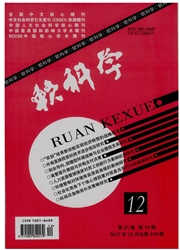

 中文摘要:
中文摘要:
利用第一次经济普查两位数和三位数制造业数据分析四川省制造业地理格局。总体上,四川省制造业呈现典型的核心—边缘结构,最为分散的产业包括食品加工、化学原料及化学制品业等,而最为集中的产业包括电子通信设备、文教体育用品等。统计分析表明,在核心—边缘框架下,资源投入、历史基础、产业政策与产业特性对四川省制造业地理集中有重要影响。本研究表明,核心-边缘结构、路径依赖对于解释经济欠发达、市场化程度较低的内陆地区的产业地理格局有重要意义。
 英文摘要:
英文摘要:
This paper investigates the micro foundations of industrial agglomeration for manufacturing industries in Sichuan province at the very disaggregated levels using the most recent economic census data. Core-periphery structure is the most important characteristic in Sichuan manufacturing. Food processing and manufacturing,chemical materials and products are the most concentrated while electronics and telecommunication,cultural and sports goods are the most dispersed. The statistical analysis indicates that natural resource inputs,historical path dependence,industrial policy and industrial characteristics together determine industrial location in Sichuan in the framework of Core-periphery structure. The findings also suggest that spatial scales matter in understanding industrial agglomeration. This study implies that new economic geography theory could shed important light on the spatial patterns of industries in an underdeveloped,less marketized,inland region.
 同期刊论文项目
同期刊论文项目
 同项目期刊论文
同项目期刊论文
 Spatial organization of multinational corporations in China: An Empirical Study based on Fortune Glo
Spatial organization of multinational corporations in China: An Empirical Study based on Fortune Glo Geographical concentration of manufacturing industries in China: The importance of spatial and indus
Geographical concentration of manufacturing industries in China: The importance of spatial and indus Globalization, institutional change, and industrial location: Economic transition and industrial con
Globalization, institutional change, and industrial location: Economic transition and industrial con 期刊信息
期刊信息
